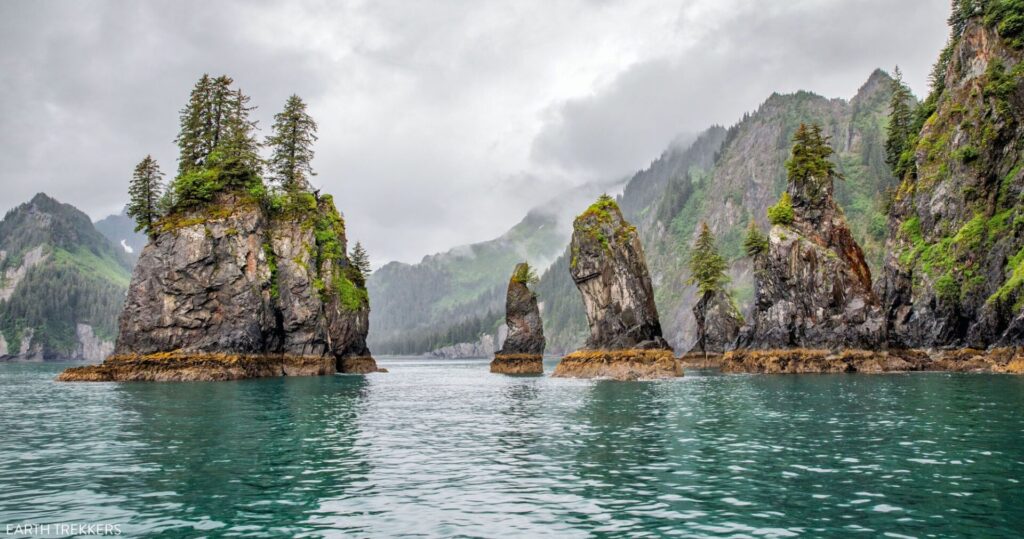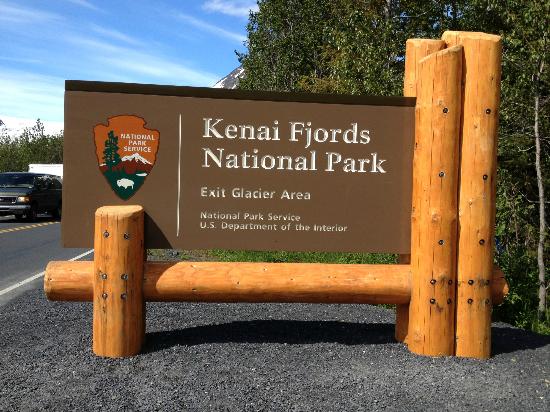Kenai Fjords National Park Alaska 2024: A Guide To Alaska’s Stunning Coastal Wilderness
Kenai Fjords National Park Alaska is located in the state of Alaska, on the Kenai Peninsula. The park covers an area of 669,984 acres & is home to a combination of wildlife, including sea otters, bears, whales, and sea lions. The park is also home to over 40 glaciers, including the favorite Harding Icefield, which is the basis of many of the park’s glaciers. read also The D’Arenberg Cube Review
The park was founded in 1980 and is managed by the National Park Service. It is a famous destination for tourists, who come to see the incredible scenery & abundant wildlife. Guests can take boat tours to see the glaciers & wildlife up close, or they can hike on one of the park’s multiple trails. The park also offers camping and different outdoor activities, making it a wonderful place to visit for anyone who loves the outdoors.
Kenai Fjords National Park Alaska History
Kenai Fjords National Park Alaska is located in the state of Alaska, protecting an area of 669,984 acres. The park is home to multiple glaciers, fjords, and ice fields, making it a favored destination for tourists & outdoor enthusiasts. The park has a rich history that dates back to the early inquiry of the region. read also Canberra Rex Hotel Review

images credit by Earth Trekkers
Early Exploration
The first recorded inquiry of the Kenai Fjords region was by Russian fur traders in the late 1700s. They founded a trading post in the area & named it Resurrection Bay. The area remained fairly unexplored until the late 1800s when American scouts began to visit the area. One of the most famous adventurers of the region was John Muir, who visited the area in 1879.
National Monument Designation
In 1978, President Jimmy Carter set a portion of the Kenai Fjords region as a National Monument. The monument protected an area of 587,000 acres & was shown to protect the outstanding natural features of the region. The memorial was later expanded in 1980 by the Alaska National Interest Lands Conservation Act (ANILCA) to include the Harding Icefield & surrounding areas.
National Park Status
In 1980, Kenai Fjords National Park Alaska was founded as a National Park, making it the fifth National Park in Alaska. The park was established to safeguard the outstanding natural features of the region, including glaciers, fjords, and ice fields. Today, the park is managed by the National Park Service and is a famous destination for tourists & outdoor enthusiasts.
Overall, the history and structure of Kenai Fjords National Park is a charming story that highlights the significance of protecting our natural resources. The park is a testament to the beauty & diversity of the Alaskan wilderness and serves as a reminder of the significance of preserving our natural heritage for future years.
Geography and Climate
Kenai Fjords National Park is located in the southern part of the Kenai Peninsula in Alaska, USA. The park covers an extent of 669,984 acres & contains the Harding Icefield, one of the biggest ice fields in the United States. The park is known for its wild coastline, fjords, and ice fields, which were created by glacial action over thousands of years.
Glacial Landscapes
The park’s landscape is overwhelmed by glaciers, which have shaped the land over the period. The Harding Icefield, which covers an area of 300 square miles, feeds over 30 glaciers in the park. The glaciers have cut out fjords, valleys, and mountains, creating a striking landscape that is home to a combination of flora & fauna.
Coastal Environments
The park’s coastline is home to a various range of marine life, including sea otters, seals, sea lions, and whales. The park’s waters are also home to a type of fish, including salmon, halibut, and rockfish. The park’s coastal habitats are also critical breeding grounds for seabirds, including puffins, cormorants, and gulls.
Weather Patterns
Kenai Fjords National Park participates in a subarctic climate, with cold winters & mild summers. The park receives a standard of 60 inches of rain each year, with most of it dropping as snow during the winter months. The park’s weather can be unpredictable, & travelers should be prepared for sudden changes in temperature & weather situations.
Wildlife and Vegetation
Kenai Fjords National Park is home to a wide range of wildlife & vegetation. The park’s location on the coast of Alaska makes it an ideal location for a type of marine species, including sea otters, harbor seals, and humpback whales.
Marine Species
The park’s waters are also home to a combination of fish species, including salmon, halibut, and rockfish. Tourists can take a boat tour to see these marine species up close & learn more about their conduct and habitat.
Terrestrial Wildlife
On land, guests to Kenai Fjords National Park can hope to see a range of terrestrial wildlife, including black bears, moose, and mountain goats. The park is also home to a mixture of bird species, including bald eagles, puffins & cormorants.
Flora Diversity
The park’s greenery is just as mixed as its wildlife. Travelers can expect to see a range of plant species, including alders, spruce, & hemlock trees. The park’s coastal location also means that guests can see a combination of coastal plant species, including beach grasses & wildflowers.
Overall, Kenai Fjords National Park is a special and various ecosystem that offers travelers the chance to see a wide range of wildlife & foliage. Whether you’re curious about marine species, terrestrial wildlife, or flora variety, the park has something to offer for everyone.
Visitor Information
Access and Transportation
Kenai Fjords National Park is located in south-central Alaska, covering an area of 1,047 square miles. The park can be accessed by road, rail, or air. The nearest airport is the Ted Stevens Anchorage International Airport, which is about 125 miles north of the park. Tourists can rent a car or take a shuttle from the airport to the park. The park’s main entry is located in the town of Seward, which is about 126 miles south of Anchorage. Guests can take the Seward Highway to reach the park.
Once inside the park, visitors can research the park on foot, by boat, or by kayak. There are several guided tours available for tourists who want to scour the park’s glaciers & wildlife. Guests can also rent a car or a bike to examine the park’s trails.
Activities and Tours
Kenai Fjords National Park offers a range of movements & tours for visitors. The park is known for its glaciers, wildlife, and scenic beauty. Guests can take a boat tour to research the park’s glaciers & wildlife. Several tour operators offer boat tours of the park. Tourists can also take a kayak tour of the park’s glaciers & fjords. read also Top 10 Best Mandi Restaurants In Dubai
The park has several hiking trails that offer spectacular views of the park’s glaciers & wildlife. Tourists can also go camping in the park’s designated camps. The park also offers ranger-led programs & educational actions for guests of all ages.
Conservation and Safety
Kenai Fjords National Park is home to a wide range of wildlife, including bears, wolves, moose, and sea otters. Travelers are advised to follow the park’s safety policies to avoid encounters with wildlife. Tourists are also advised to pack proper clothing & gear for the park’s changing weather situations.
The park is committed to maintaining its natural help & wildlife. Travelers are encouraged to practice Exit No Trace principles and to appreciate the park’s natural surroundings. The park also has several protection programs in place to safeguard its wildlife & natural help. read also Top 10 Best Seafood Restaurants in Dubai
Frequently Asked Questions
What activities are available for visitors at Kenai Fjords National Park?
Kenai Fjords National Park offers a mixture of activities for visitors to enjoy. Some famous activities include boat tours of the fjords, kayaking, hiking & wildlife watching. The park also has several campgrounds for guests who want to finish the night.
What are some notable historical facts about Kenai Fjords National Park?
Kenai Fjords National Park has a rich history that dates back to the early 20th century. The park was founded in 1980 to protect the Kenai Peninsula’s fjords, glaciers, and coastal rainforests. The park also has a powerful cultural history, with proof of human occupancy dating back over 1,000 years.
What are the transportation options for reaching Kenai Fjords National Park from Seward?
Seward is the gateway to Kenai Fjords National Park, and tourists can reach the park by boat or by car. The park has several boat tour operators that offer tours of the fjords, while the Exit Glacier area of the park can be accessed by car.
What year was Kenai Fjords National Park officially established?
Kenai Fjords National Park was established in 1980, making it one of the newer national parks in the United States.
Can visitors drive through the park, and if not, what are the alternatives for exploring it?
Tourists cannot drive via Kenai Fjords National Park, as there are no roads that cross the park. Yet, visitors can research the park by foot, kayak, or boat tour.
Which city is the nearest to Kenai Fjords National Park, and how does this affect visitor access?
Seward is the closest city to Kenai Fjords National Park, and it is the gateway to the park. Travelers can readily access the park from Seward by boat or by car. Regardless, visitors who are not waiting in Seward will be required to plan their transportation therefore.







